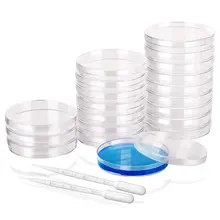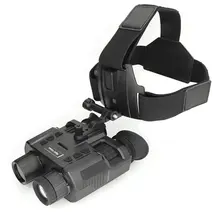A lux meter, commonly referred to as a light meter, is an indispensable tool for gauging illuminance, which is the measure of light intensity as perceived on a surface. This instrument is pivotal across various sectors that require meticulous monitoring and adjustment of light levels for quality assurance, health and safety considerations, and aesthetic optimization. The lux meter proves particularly useful in disciplines such as photography, cinematography, architecture, and occupational health and safety, to name a few.
Assortment of Lux Meters and Their Features
Diverse models of lux meters are tailored to meet distinct measurement requirements. Portable digital lux meters are favored for their convenience and ease of operation, making them ideal for on-site assessments. Laboratory settings often employ benchtop versions for their enhanced precision. Certain lux meters are equipped with data logging functions, perfect for tracking illuminance over time. Advanced lux meters like the Fluke 941 light meter illuminance meter tester boast features such as spectral sensitivity aligned with human vision, essential for evaluating lighting efficacy in workplaces and public venues.
Design and Functionality of Lux Meters
The architecture of a lux meter typically encompasses a light sensor, a display, and user interface controls. The sensor, usually a photodiode, responds to light and translates it into an electrical signal, which is then processed and exhibited on the display in lux units. Certain models are designed with detached sensors linked by a cable, enabling measurements in tight spaces. The controls range from basic power switches to intricate menus for configuring measurement ranges and data logging frequencies.
Construction Materials of Lux Meters
The materials selected for constructing lux meters prioritize durability and optical characteristics. Stainless steel is commonly employed for the outer casing, offering a robust and resilient shell. Sensor enclosures are made from optically transparent materials like glass or plastic to maintain measurement accuracy. These material choices ensure the lux meter remains dependable and durable, even under rigorous industrial conditions.
Commercial Uses and Applications
Lux meters are essential in sectors where precise lighting is a critical factor. In manufacturing, appropriate lighting is key to maintaining product quality and ensuring employee safety. In the realm of agriculture, light meters are instrumental in optimizing plant growth within greenhouses. Office environments benefit from them by fostering a conducive workspace that can bolster productivity. In the visual arts of photography and film, the light lumen meter is crucial for securing optimal exposure, thereby influencing the aesthetic quality of the output.
Capabilities of Lux Meters
While the primary role of a lux meter is to quantify light intensity, many units also offer supplementary capabilities, such as measuring various light sources from LEDs to fluorescents, and computing average illuminance over time. Certain lux meters can also assess the color temperature of light, an invaluable feature in photography and cinematography for ensuring true-to-life color reproduction.
Attributes of Lux Meters
Lux meters are equipped with an array of attributes that bolster their practicality and precision. A digital lux meter may feature an illuminated display for visibility in dim conditions. Some models provide Bluetooth connectivity for seamless data transfer, facilitating the logging and analysis of illuminance data. The Fluke 941 light meter illuminance meter tester, for example, is renowned for its sturdy build and user-friendly interface, attributes highly regarded by professionals in challenging settings.
Advantages of Utilizing a Lux Meter
Employing a lux meter yields numerous advantages, such as adherence to health and safety standards by upholding adequate lighting in work environments. In architectural design, it aids in devising lighting arrangements that are both practical and energy-efficient. For photographers and filmmakers, it guarantees that their lighting configurations achieve the intended visual impact. Overall, a lux meter significantly enhances the quality and exactitude of work in a multitude of fields.
Guidelines for Using and Maintaining a Lux Meter
Effective use of a lux meter begins with calibration in line with the manufacturer's guidelines. Accurate measurement necessitates proper sensor placement to fully capture light intensity. Maintenance involves keeping the sensor clean and unobstructed, and storing the device in a protective case when not in use. Periodic recalibration is essential for sustained precision. Selecting an appropriate lux meter entails considering the measurement range, the nature of the light to be measured, and the specific features that best serve the intended application.
Intended Recipients and Fulfilling Their Requirements
The intended clientele for lux meters spans professionals in engineering, health and safety, interior design, and horticulture. Each profession has unique lighting measurement needs, and the adaptability of a lux meter enables it to satisfy these varied demands. For example, an engineer might seek a meter with high precision for technical evaluations, whereas an interior designer may value user-friendliness and design aesthetics.
How does a lux meter refine the precision of light measurements?
A lux meter refines measurement precision through its sensitive photodetector and meticulous calibration. Top-tier devices, such as the Fluke 941 light meter illuminance meter tester, are engineered to deliver consistent and trustworthy readings, which are paramount in scenarios where light intensity significantly influences outcomes.
Considerations for Integrating a Lux Meter into an Existing System
Integrating a lux meter into an established system requires contemplation of device compatibility, potential software modifications, and support for customization. The integration process should be strategically planned to ensure that the lux meter augments and refines the current setup without causing disruptions.
Is a lux meter suitable for both indoor and outdoor light measurements?
Indeed, a lux meter is apt for both indoor and outdoor light assessments. Nonetheless, selecting a model appropriate for the intended environment is crucial. For outdoor use, a light lumen meter with an extensive measurement range and resilience to environmental elements is recommended.
Discover the comprehensive selection of lux meters on Alibaba.com to identify the ideal instrument that aligns with your enterprise's specific lighting measurement requisites.































 浙公网安备 33010002000092号
浙公网安备 33010002000092号 浙B2-20120091-4
浙B2-20120091-4